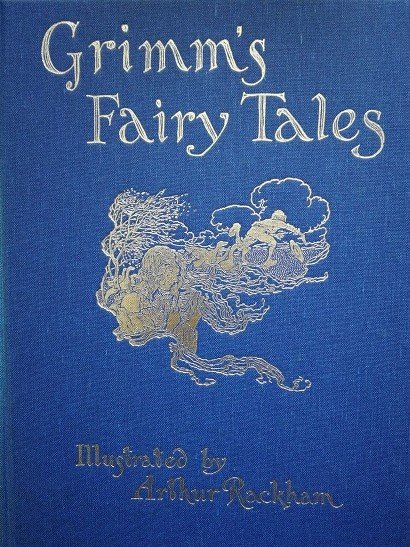10 More Fairy Tale Tropes and Clichés
A couple of years ago, I wrote a post about fairy tale tropes and clichés, limiting the list to 10.
Obviously, there are more than 10, so I thought it was time for another list.
As before, in no particular order, here are another 10 tropes and clichés found in fairy tales.
The protagonist has to work hard for their happy ending.
One example is ‘The Black Bull of Norroway’ where the young woman, having failed to follow the bull’s instructions, finds herself stuck in a valley for 7 years, after which she is still kept from her love and, after more stress, is finally reunited with him.
Another is ‘The Goose Girl’, who, having lost her mother’s enchanted handkerchief, is forced to change places with her maid and endures hardship before regaining her rightful place.
‘The Goose Girl’ by Paul Menerheim
Simple acts of kindness are rewarded.
This usually involves either animals or old people.
In ‘The Queen Bee’, the youngest of 3 brothers stops his siblings from kicking over an ant hill, killing ducks and smoking out a beehive.
Later, when his life and that of his brothers depends on his actions, the ants, ducks, and bees offer him aid.
Image from ‘The Queen Bee’ fairy tale
Transformations.
More often than not, the transformation is from human to animal, and is either as punishment – ‘Beauty and the Beast’ – or as a malicious act – ‘The Six Swans’.
In the latter story, a king’s new wife wants to do away with her 6 stepsons, so sews 6 enchanted shirts which transform them into swans.
Wasted wishes.
A character is given 3 wishes and invariably wastes the first 2, usually by carelessly wishing for something nonsensical.
The 3rd wish then has to be used to undo whatever damage was caused by the first 2.
A few years ago, I shared a Hungarian folk tale called ‘The Wishes’ after which I discovered there’s a similar story from England; interestingly, both involve sausages.
The damsel in distress.
Speaks for itself and examples that come to mind are ‘Sleeping Beauty’, ‘Snow White’ and ‘Bluebeard’.
‘Bluebeard’ by Gustave Dore
The forest.
The forest is usually home to unsavoury characters; either that or is imbued with some kind of enchantment.
In ‘Brother and Sister’, the siblings run to the forest to escape their stepmother, who happens to be a witch.
She casts transforming spells in the streams and eventually the brother drinks from a stream and is turned into a deer.
The ‘thing’ that’s forbidden.
When the protagonist ignores or forgets the warning attached to the forbidden ‘thing’, trouble inevitably follows.
In ‘Little Red Riding Hood’, Red leaves the path, which her mother expressly told her not to do, and is almost immediately waylaid by the wolf.
In ‘East of the Sun and West of the Moon’, the heroine disobeys the bear’s warning not to talk to her mother alone, and that leads to her mistrusting the bear, which leads to heartache.
‘East of the Sun and West of the Moon’ by Dreoilin (Deviantart)
Commoner becomes royalty, a variation of ‘the royal wedding’ trope.
In ‘The 12 Dancing Princesses’, the soldier breaks the curse and marries the eldest princess, thus becoming the heir.
Killing children.
This reprehensible act is something evil mothers-in-law usually accuse their daughters-in-law of committing.
In ‘The Six Swans’, the boys’ sister, tasked with sewing 6 shirts to break the spell and free them must not speak the entire time she’s sewing the shirts.
Having married a king, she remains mute and, when her children are born, her mother-in-law hides them and accuses her of killing the babies and eating them.
The sister is on the verge of being executed but is saved by her swan brothers.
‘The Six Swans’ by Warwick Goble
Interestingly, in the very first edition of ‘The Brothers Grimm Fairy Tales’, instead of the stepmother, it was the mothers of Snow White, and Hansel and Gretel who tried to have them killed.
‘3’ is the magic number.
In ‘Brother and Sister’, having heeded his sister’s pleas not to drink from the first 2 streams, the brother finally drinks from the 3rd and is then turned into a deer.
‘Little Brother and Little Sister’ by Gustaf Tenggren
‘Rumpelstiltskin’ spun gold for the miller’s daughter for 3 nights, then gave her 3 days to guess his true name.
The queen tries to kill ‘Snow White’ 3 times, first with a laced bodice, which she does up too tight, then with a poisoned comb and finally, the poisoned apple.
‘Snow White’ by IrenHorrors (Deviantart)
There are so many more fairy tales that feature the number ‘3’, which had me well and truly distracted, reading the ones I’m not familiar with.
Anyway, I hope you enjoy this list as much as I did, choosing the tropes.







